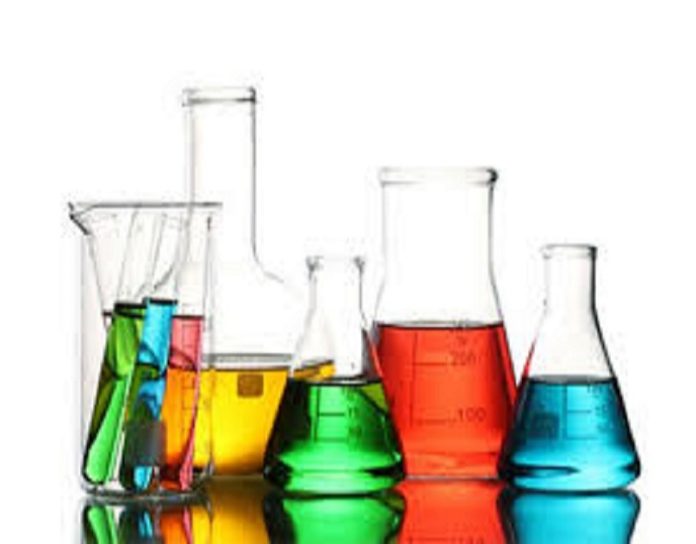
Chlor-alkali Market: Introduction
In terms of value, the global chlor-alkali market is anticipated to expand at a CAGR of 4% from 2020 to 2030 and cross value of US$ 100 Bn by 2030. In terms of demand, Asia Pacific led the global chlor-alkali market in 2019. This trend is expected to continue between 2020 and 2030. Rise in demand for chlor-alkali products in various applications such as building & construction, healthcare, aluminum processing, pulp & paper, and chemical processing is estimated to propel the global chlor-alkali market during the forecast period. Based on application, the PVC segment accounted for key share of the global chlor-alkali market in 2019. It is is estimated to remain the dominant segment of the global chlor-alkali market during the forecast period. Increase in usage of pipes & fittings, profiles, and wire & cables– these are primarily made of PVC– is a prominent factor projected to propel the chlor-alkali market in the near future.
Currently, the global chlor-alkali market has been severely hampered by the COVID-19 crisis. The ‘lockdown’ situation in most of the countries across the globe has adversely affected the operating rates and logistics scenario. China, a major producer and exporter of chlor-alkali, is facing severe challenges related to the coronavirus outbreak. Chlor-alkali plant operating rates have decreased significantly in the country. Currently, plants are operating at the rate of around 60% in China.
Request For Sample:https://www.transparencymarketresearch.com/sample/sample.php?flag=S&rep_id=1521
The ‘lockdown’ situation across the globe has hit road, sea, and air transportation. This has led to high level of inventories among the major producers of chlor-alkali in the world. The pandemic situation is still evolving; most of the countries are relying on lockdown to counter the outbreak. Thus, the chlor-alkali market is expected to contract in 2020.
Environmental Concerns Associated With Chlor-alkali May Hamper Overall Demand
Chlorine is primarily used to produce polyvinyl chloride (PVC). PVC is non-biodegradable; and generates dioxins when burnt for controlled recycling. Furthermore, hydrochloric acid is generated during the thermal decomposition of PVC. Chlorine is also a highly reactive gas. Inhalation of small amounts of chlorine for short periods of time adversely affects the human respiratory system and can result in irritation of the skin and eyes. Thus, environmental constraints associated with chlor-alkali production may hamper the overall demand for chlor-alkali during the forecast period.
Buy Now :https://www.transparencymarketresearch.com/checkout.php?rep_id=1521<ype=S
In 2017, the European Union enacted regulations to cease the manufacture of chlorine via the mercury cell process owing to environmental concerns. The 21 mercury technology plants were operational in Europe in 2017. Currently, seven of these have closed down, while 14 have been converted or are in the process of conversion into less harmful membrane technology.
Asia Pacific to be Highly Lucrative Region of Chlor-alkali Market
In terms of value, Asia Pacific held prominent share of more than 60% of the global chlor-alkali market in 2019. Development of smart cities, particularly in India, and increasing urbanization and industrialization in Asia Pacific are projected to boost the demand for chlor-alkali in the region in the near future. Chlor-alkali is widely employed in manufacture of PVC and glass, which are primarily employed in building & construction activities for residential, commercial, and industrial applications.
Explore Transparency Market Research’s award-winning coverage of the global Industry:https://www.prnewswire.com/news-releases/amidst-covid-19–progressive-companies-in-high-performance-ceramic-coatings-market-vie-to-introduce-high-ph-surface-coatings-to-stave-off-coronavirus-valuation-estimated-to-exceed-us-14-3-bn-by-2030-tmr-301287457.html
The chlor-alkali market in Asia Pacific is expected to expand at a CAGR of more than 4.7% between 2020 and 2030. Together, China and India accounted for more than 70% share of the chlor-alkali market in Asia Pacific inn 2019. Presence of large number end-user industries such as alumina manufacturing, PVC production, chemical processing, pulp & paper, textile, and glass manufacturing is a key factor that is anticipated to drive the demand for chlor-alkali in these countries during the forecast period.
Competition Landscape
Global manufacturers of chlor-alkali have made substantial investments to expand their business over the last few years. In September 2018, AGC started evaluations to expand the capacity of its chlor-alkali business in Thailand, which is estimated to produce 590,000 tons of caustic soda. In November 2018, Tata Chemicals announced plans to expand the soda ash capacity by about 150,000 MT. In February 2019, Grasim Industries, part of the Aditya Birla Group, announced plans to acquire the chlor-alkali business of KPR Industries to strengthen its footprint in the chlor-alkali market. Major manufacturers of chlor-alkali include Dow, Solvay, Tata Chemicals Ltd., INEOS, Occidental Petroleum Corporation, Kemira, Tosoh Corporation, and AGC Inc.
Global Chlor-alkali Market: Segmentation
Chlor-alkali Market, by Product
- Caustic Soda
- Chlorine
- Soda Ash
Chlor-alkali Market, by Application
- Aluminum Processing
- EDC/PVC
- Chemical Processing
- Dyestuff
- Glass Manufacture
- Food Processing
- Pulp & Paper
- Water Treatment
- Soaps & Detergents
About Us :
Transparency Market Research is a global market intelligence company, providing global business information reports and services. Our exclusive blend of quantitative forecasting and trends analysis provides forward-looking insight for thousands of decision makers. Our experienced team of Analysts, Researchers, and Consultants, use proprietary data sources and various tools and techniques to gather, and analyze information.
Our data repository is continuously updated and revised by a team of research experts, so that it always reflects the latest trends and information. With a broad research and analysis capability, Transparency Market Research employs rigorous primary and secondary research techniques in developing distinctive data sets and research material for business reports.





